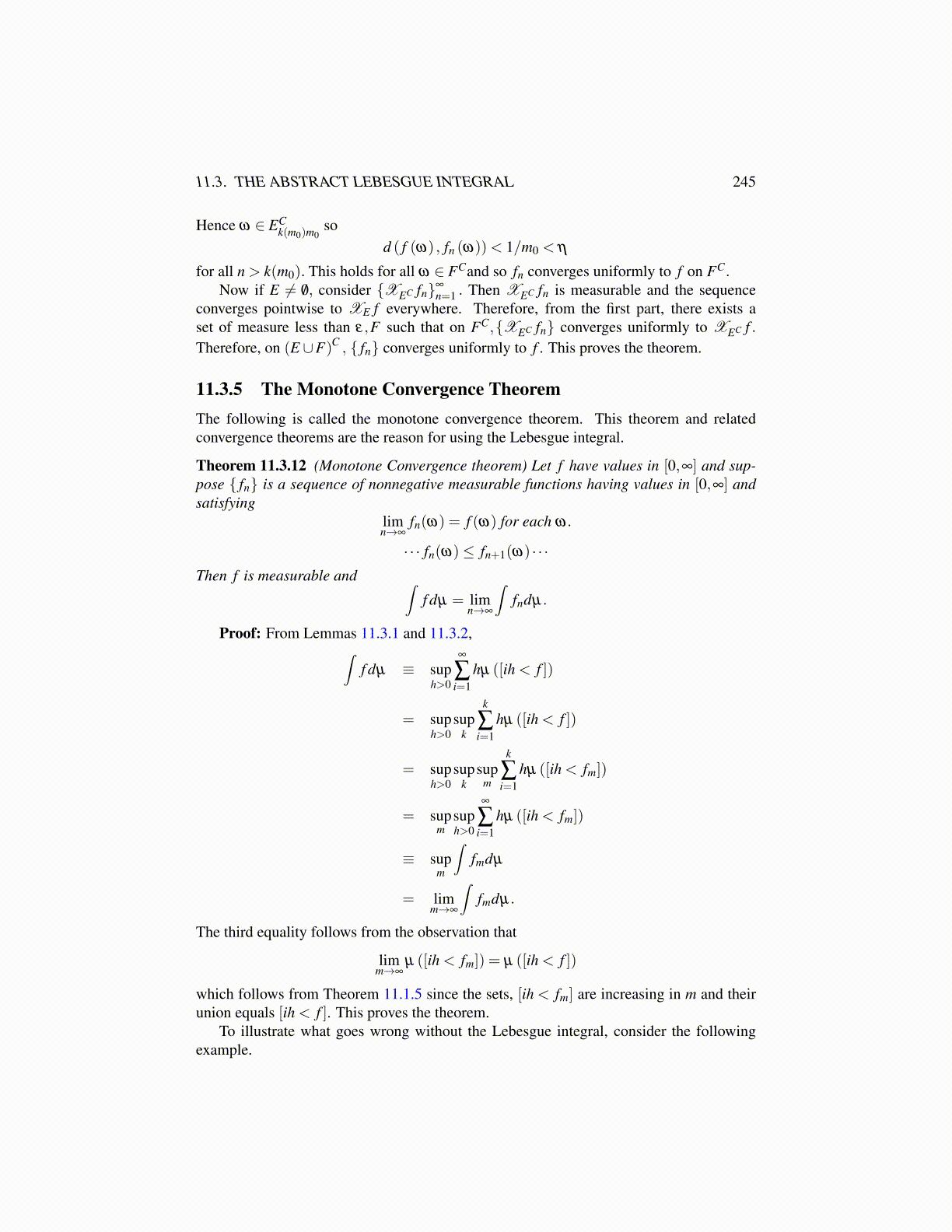
11.3. THE ABSTRACT LEBESGUE INTEGRAL 245
Hence ω ∈ ECk(m0)m0
sod ( f (ω) , fn (ω))< 1/m0 < η
for all n > k(m0). This holds for all ω ∈ FCand so fn converges uniformly to f on FC.Now if E ̸= /0, consider {XEC fn}∞
n=1 . Then XEC fn is measurable and the sequenceconverges pointwise to XE f everywhere. Therefore, from the first part, there exists aset of measure less than ε,F such that on FC,{XEC fn} converges uniformly to XEC f .Therefore, on (E ∪F)C , { fn} converges uniformly to f . This proves the theorem.
11.3.5 The Monotone Convergence TheoremThe following is called the monotone convergence theorem. This theorem and relatedconvergence theorems are the reason for using the Lebesgue integral.
Theorem 11.3.12 (Monotone Convergence theorem) Let f have values in [0,∞] and sup-pose { fn} is a sequence of nonnegative measurable functions having values in [0,∞] andsatisfying
limn→∞
fn(ω) = f (ω) for each ω.
· · · fn(ω)≤ fn+1(ω) · · ·Then f is measurable and ∫
f dµ = limn→∞
∫fndµ.
Proof: From Lemmas 11.3.1 and 11.3.2,∫f dµ ≡ sup
h>0
∞
∑i=1
hµ ([ih < f ])
= suph>0
supk
k
∑i=1
hµ ([ih < f ])
= suph>0
supk
supm
k
∑i=1
hµ ([ih < fm])
= supm
suph>0
∞
∑i=1
hµ ([ih < fm])
≡ supm
∫fmdµ
= limm→∞
∫fmdµ.
The third equality follows from the observation that
limm→∞
µ ([ih < fm]) = µ ([ih < f ])
which follows from Theorem 11.1.5 since the sets, [ih < fm] are increasing in m and theirunion equals [ih < f ]. This proves the theorem.
To illustrate what goes wrong without the Lebesgue integral, consider the followingexample.